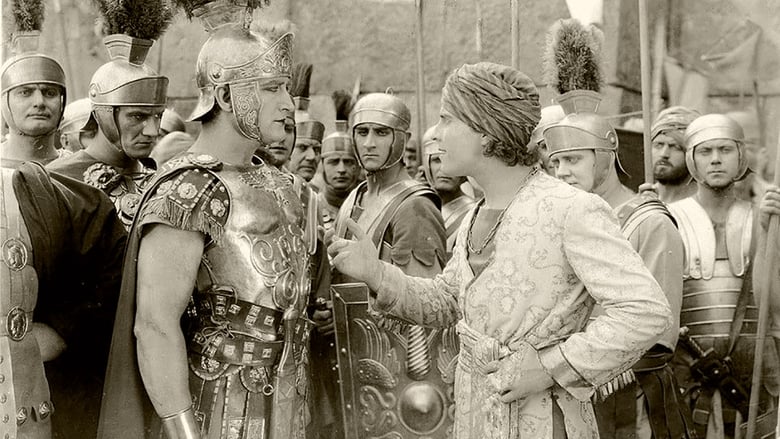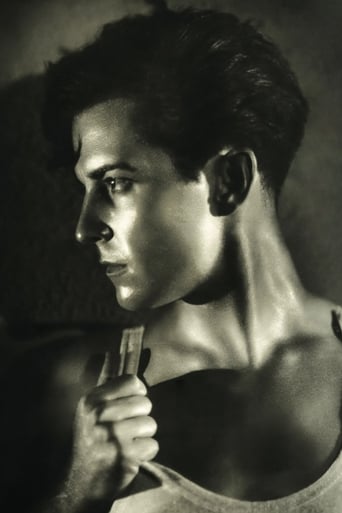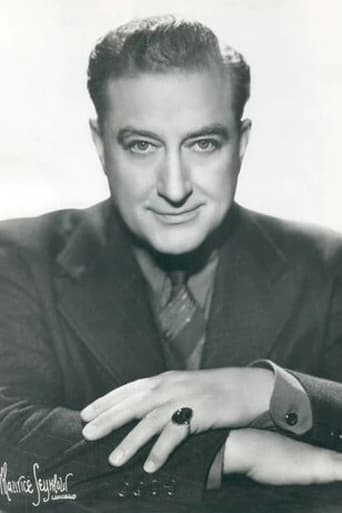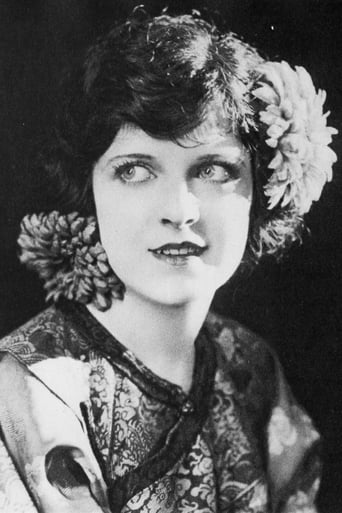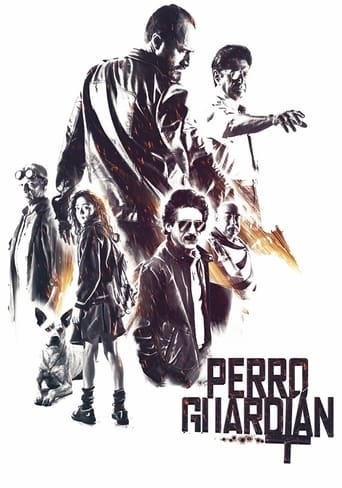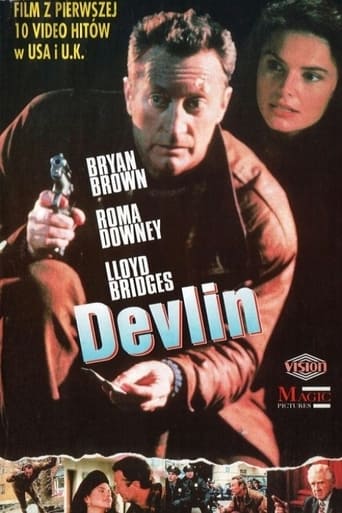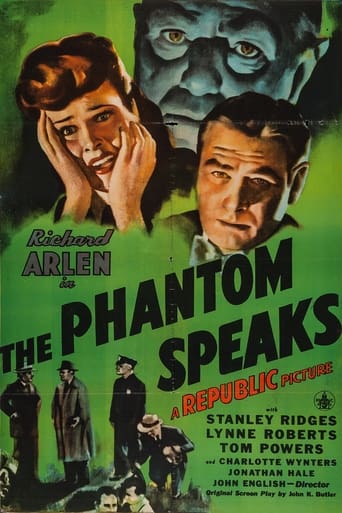Ben-Hur: A Tale of the Christ (2015)
Erstwhile childhood friends, Judah Ben-Hur and Messala meet again as adults, this time with Roman officer Messala as conqueror and Judah as a wealthy, though conquered, Israelite. A slip of a brick during a Roman parade causes Judah to be sent off as a galley slave, his property confiscated and his mother and sister imprisoned. Years later, as a result of his determination to stay alive and his willingness to aid his Roman master, Judah returns to his homeland an exalted and wealthy Roman athlete. Unable to find his mother and sister, and believing them dead, he can think of nothing else than revenge against Messala.
Watch Trailer
Cast


Similar titles
Reviews
Very well executed
Simply Perfect
People are voting emotionally.
It was OK. I don't see why everyone loves it so much. It wasn't very smart or deep or well-directed.
The success of this movie rests squarely on the shoulders of the leading man. In this case, those shoulders are totally – and by totally I mean 95% – inadequate. From our first glimpse to the last, Ramon Novarro is an inescapable liability. He doesn't look the part. Worse, he acts against the part. He is weak when the script demands he be strong. He is moonie when he is required to be decisive. He is supine rather than charismatic, impotent rather than forceful, delicate rather than robust. He is an absolute dead loss throughout the whole movie, except oddly for one sequence. Surprisingly, he handles the galley-slave scenes with vigor, dignity and guts. He's perfect in these scenes, but a liability everywhere else. You should see the flippy way he holds the reins from his chariot. There's Francis X. Bushman whipping his horses into a frenzy, and what's pallid little Novarro doing? He's namby-pambying along at about two miles an hour, showing not the slightest signs of sweat or exertion, while the other charioteers are kicking up dust all around him. "What, me worry?" he seems to be saying. "Let the stunt men do all the work. And anyhow, every man, woman and child in the audience knows this race is fixed anyway!" Presumably, the galley scenes were not directed by easygoing Niblo but by someone like Brabin or Ingram with a bit more authority.Otherwise, the movie is a blend of good, bad and indifferent. It is good to see Joseph depicted as an elderly man, but somewhat odd to see someone ask him if he is "Joseph of Nazareth?" And even more peculiar to see him answer in the affirmative. How could he possibly be Joseph of Nazareth? The title-writers have just gone to a great deal of effort to tell us he is "Joseph of Bethlehem". The movie then repeats the canard that the wise men visited the Child at the stable (here converted into a cave) even though Luke makes quite an issue of the fact that the wise men actually arrived much later, after the Divine Family had settled into a "house". Normally, the introduction of a strong, charismatic hero at this stage would soon make an audience forget such piddling points (as indeed is the case in the remake with Charlton Heston). But, as said, the disappointing excuse for a hero presented by weak-as-water Novarro only draws more attention to other script defects. Fortunately, director Fred Niblo was blessed with supporting players, led by Francis X. Bushman and Nigel De Brulier who do their best to focus the audience's eyes elsewhere. In fact, Niblo adds lots of clever little touches that Wyler didn't dare repeat, like the extra woman who sneers at the jubilant Jewish bible-basher who feels that prophecies are being fulfilled; and the naked girls who strew flowers along the road for the Roman conquerors; and the soldiers who rip the bodice from a bystander just for the hell of it; and the slimy, contemptible Jewish apple vendor who browbeats a venerable old man for stealing one of his apples. Yes, in many respects, the script is much stronger in this version. Sheik Ilderim (poorly enacted and obviously false-bearded here) is still a weak link, but Simonides (superbly played by Nigel De Brulier) is much stronger and helps disguise the over-enthusiastic May McEvoy (whose super-animated Esther is still far preferable to the nothing performance contributed by Haya Harareet). On the hand, the Messala role is not as cleverly built up as in the Wyler version. Mind you, Bushman makes a great impression nonetheless. Frank Currier also impresses as Quintus Arius, although he is not given all the flattering camera angles and extra footage accorded Jack Hawkins. Yet on the whole the galley scenes are far more awesome in this version than in the remake where it is often obvious that miniatures are being used. In this 1925 version, not only do all the ships look real, but the boarding and ramming sequences are ten times more horrifying. Although as in the remake, her appearance is brief, Mary is beautifully played here by Betty Bronson. True, she doesn't look the slightest bit Jewish, but Betty gives such a luminous performance that the word "discrepancy" simply doesn't figure at all.
When MGM released Ben-Hur in 1925 the studio was only a year old. This and The Big Parade insured the lasting success of this union of many small studios that became the Tiffany studio of Hollywood. The success however was a mighty close run thing.The Goldwyn part of Metro-Goldwyn-Mayer had the property and brought it to the studio when the merger took place. Sam Goldwyn himself had no connection with the studio that bore his name when the conglomeration was formed.But I'd hate to think he was the guy who made the deal on the original property. According to the Films Of MGM book, Goldwyn Studios wanted the film rights so bad that they bought the novel and the play the novel was made from with an agreement to give 50% of the profits to the original owners which was the Klaw/Erlanger theatrical producers and Florenz Ziegfeld who probably bought the stage rights from them.Why would they make such a deal? Well next to the Bible and later for a while Gone With The Wind, Ben-Hur was the largest selling book in the history of the English language. Even 50% profit they envisioned at Goldwyn would bring lots of cash.But the usual problem of cost productions swelled the budget, the film was shot partially in Italy and later brought back to Hollywood when the bean counters saw the numbers going through the roof. When it finally did hit the big screen, it never quite made back what the cost was. It took The Big Parade to put MGM in the black that year and keep it there for a while.With some deviations the plot of Ben-Hur runs pretty close to that of the more familiar sound version where Charlton Heston won his Academy Award for Best Actor. Ramon Novarro and Francis X. Bushman play Ben-Hur and Messala the Jewish aristocrat and the Roman Tribune, childhood friends and adult enemies. The character of Hur house steward Simonides is radically different. Instead of loyal Sam Jaffe, we have Nigel DeBrulier who instead of hiding the Hur fortune, lives pretty good off it. Honestly, he thinks Ben-Hur died in the galleys and he is trying to provide for daughter Esther played by May McAvoy.There is one character who does not appear in the sound version, Egyptian siren Carmel Myers. She's Messala's girl friend and a sly little minx. He sends her off to vamp the new mysterious chariot driver who says he's going to take Messala down in the chariot races and find out who he is. Carmel is quite the temptress to say the least.For 1925 the spectacle is indeed awesome, the chariot race is every bit as thrilling as the one that Charlton Heston and Stephen Boyd did in the 1959 version. The sea battle isn't quite up to what the 1959 version was, but special effects are always improving. A computer graphics chariot race would indeed be something.Besides the stars of the film, Ben-Hur served as some kind of training ground and a place to be in. Take a look at the credits and you'll see such folks as John and Lionel Barrymore, Douglas Fairbanks and many other silent screen leads listed as uncredited extras in the crowd scenes. Also such up and coming folks like Clark Gable, Gary Cooper, Joan Crawford, and Myrna Loy are all just unknown extras and somewhere in Ben-Hur. The basic themes of General Lew Wallace's novel are kept intact and if the box office didn't quite pull MGM out of the hole, it certainly gave the studio its first real prestige picture.
LAST NIGHT, BEING Sunday, December 13th, was pretty typical as far as our usual routine goes. We started the day with Church, followed by a special, a good Olde-Fashioned, Sundae Home-cooked Breakfast. Then after a necessary trip to Walgreen's, we watched a whole lot of NFL. Our Bears took it on the chin from the hated rival Green Bay Packers 21-14. (It's been one of those years!) No hard feelings, Cheeseheads! WITH THE SUN punching out early from work these days, the itinerary calls for plenty of relaxin' round the 'bonfire'; which, in the case of us upper neolithic hunter-gatherers, has morphed into the Parlor TV. We usually gradually come down by reading the Sunday Newspapers, taking the dog for a little extra walk and viewing either a LAW & ORDER episode (any one on their family tree), maybe watching a movie on Turner Classic Movies or Fox Movie Channel.AND WHEN THE time for playing Taps arrives, it usually means to have a "spot of Tea" and make sure that the prescriptions for my friend Arthur Ritis are taken in proper numbers and dosage; all being washed down with that Tea (the only good thing the English did for we Irishers)! WELL ON THIS particular eve, the promos on TCM caught our attention. It announced that BEN-HUR would be shown on that Classic Movies Channel that night,late. Well, we were still "up n' at 'em" when the movie started, so we (just "I" actually) decided, what the hey, watch the beginning when young Mr. Charlton Heston and Mr. Stephen Boyd were portraying youthful Judah Ben-Hur and Massala.WOAH! HOLD ON now! This was not the 1959 MGM Big Screen version of 1959; but rather the MGM Big Screen Silent version of 1925. Well we still had the notion about just watching a little of it and then throwing in the towel. Well, Schultz can back me up on this one, there was no way that we were gonna walk away from this one early! FROM THE VERY first scenes portraying the Nation of Israel suffering under the oppression of their Roman Conquerers. Our attention is immediately drawn to the two young boys. One of them being a Jew, Judah Ben-Hur(Ramon Novarro) and Massala (Francis X. Bushman), a young Roman lad; each growing up together in the Holy Land. Neither one knowing or thinking about the realities of the real world; which would all too soon become all too real to them.WITH LITERALLY A CAST of thousands, this Silent boasted of some fine company of actors in support. We have May MacAvoy, Betty Bronson, Claire McDowell, Kathleen Key, Carmel Meyers, Mitchell Lewis, Frank Currier, Charles Belcher, Dale Fuller, Winter Hall and Rippy Hamlin*ADDITIONALLY, THE CAST boasts of having a roster of extras there to be spectators for the Chariot Race that included a veritable Who's Who in Hollywood. Also many of the uncredited players wit only bit parts were present to add a depth here to fore unseen. Among these are: Gary Cooper, Janet Gaynor, Clark Gable, Myrna Loy, Carole Lombard, Tom Tyler and Sally Rand. There was also a couple of actors who would have done it all in their lives by careers end. Those being Leo White, who supported Chaplin and The Three Stooges, and Nigel De Bruller, the many times screen Cardinal Richilieu and future Wizard Shazam in THE ADVENTURES OF CAPTAIN MARVEL (Republic,1941).WE CAN ONLY guess as to why the Silent Film form holds such a firm hold on our imaginations. Perhaps it is that the absence of sound, words and dialog on a soundtrack compels a viewer to devote all his attention to the screen. One has to concentrate, read title cards, follow the action and absorb the storyline in relative silence; with only the accompanying musical score to occupy the auditory sense.** ALTHOUGH THE FILM is mainly filmed in glorious b&w, there are several important scenes rendered in the old, 2 strip Technicolour process. Bright and even a bit on the gaudy side,it is nonetheless quite impressive.THE WHOLE PROCESS of viewing a Silent Film,especially a feature length one, requires a special skill unto itself. And we are convinced that the dream-like quality of the Silent Screen leaves the viewer with a deep feeling of having truly witnessed a real life occurrence. In this case, it is the life of Christ and some of his contemporaries.WELL, DIDN'T WE? Schultz says so! That's good enough for me!NOTE * We wuz jest pulling' yer leg on this 'un. Ain't no movie actor in no pitcher show with that handle.NOTE ** Far from being truly and completely silent, all Silent Movies had at least a piano or organ as an instrument of accompaniment. The Bigger Productions, like this BEN HUR: A TALE OF THE Christ, had a whole score; which had whole orchestral accompaniment when it played the big houses downtown.
I finally sat down to watch the 1925 silent version of this story, and from the very beginning I went in completely biased to the 1959 remake by William Wyler, as that is what I consider to be possibly the greatest film ever made. I have to give credit where it's due; the 1925 movie as directed by Fred Niblo is remarkable for its time. What stood out most for me was the cinematography, which really was ahead of many silent films I've seen. I didn't care for Ramon Navarro as a rather boyish Ben-Hur, though -- certainly not as compared to the iconic and magnificent Charlton Heston -- and comparisons are going to be inevitable in a case such as this. There were some amazing camera shots in this version, and most of the big sequences compare favorably to the 1959 film. The only scene which I might say comes close to actually topping the redo is the battle at sea. The chariot race is outstanding, but I'd have to give the nod of superiority to Wyler's version. I also thought the scenes with Judah running into Jesus Christ were much more prolific in the sound remake; not one of them in the silent version comes even close to capturing that emotion for me. In the final analysis, I'd say that I probably only truly enjoyed the Niblo film about three stars' worth personally (out of four) ... however, it deserves accolades for its vast achievements when considering the time in which it was made.


